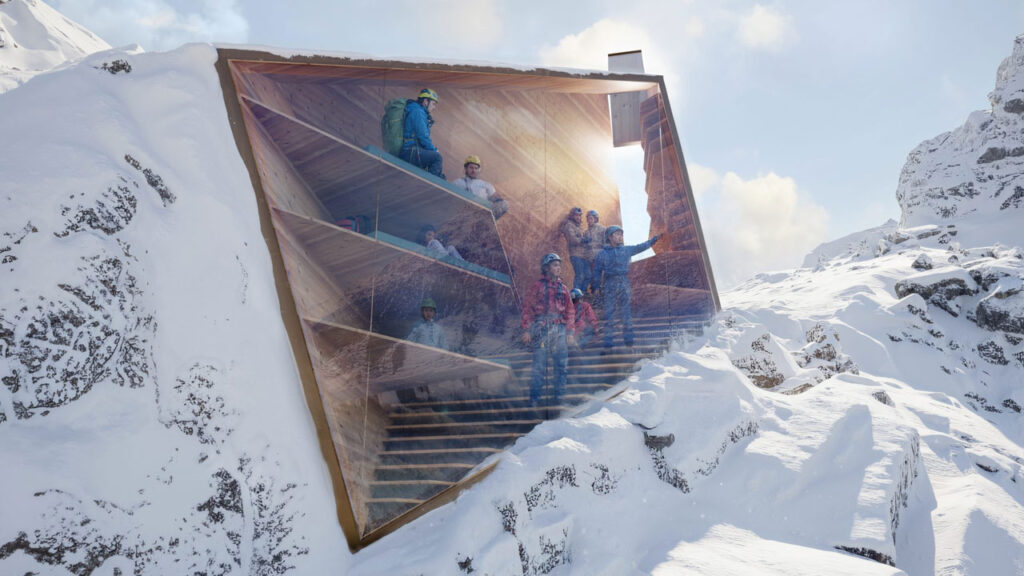Italian architecture studio Carlo Ratti Associati (CRA) has partnered with international furniture fair Salone del Mobile to unveil a new digitally fabricated alpine bivouac that will make its first appearance at the upcoming 2026 Winter Olympics in Milan.
As per the information provided by Carlo Ratti Associati to Homecrux, following its debut as a pavilion during the Games, the structure will be air-lifted by helicopter to a remote high-altitude location in the Alps, where it will serve as a permanent refuge for mountaineers.
Interestingly, the structure is designed to blend with the terrain, not stand out on its own, as is the case with modern-day bivouacs “that look like airships that have landed on our beautiful alpine landscapes,” Carlo Ratti, CRA co-founder, points out. “Here we took the opposite approach: (to create) a structure that blends as much as possible with the surroundings,” he added. It is to be noted that Carlo Ratti Associati designed the bivouac to harmonize with the mountain terrain, shaping its angular form based on a 3D scan of natural Alpine rock formations.
The finished structure combines cross-laminated timber (CLT), aerogel, and metal, and is equipped with a 5 kW-peak photovoltaic system and energy storage to support autonomous operation and network connectivity. An integrated air condensation system generates fresh drinking water each day, providing a dependable resource for climbers and trekkers.
Guided by principles of circular design, the project’s adaptability enables it to serve both as an urban pavilion and a long-lasting alpine refuge. Another notable feature of the shelter is its ability to emit bright red lighting. As noted by Arch Daily, in low-visibility conditions, the shelter will emit a bright red light, guiding mountaineers to their base camp.
Salone del Mobile President Mario Porro also shared her thoughts about the design, stating, “For the Salone, the bivouac by Carlo Ratti Associati conveys a vision of design we share: one capable of blending landscape, innovation, and respect. It speaks of a future in which architecture does not impose itself but adapts, observes, and enters into dialogue with the environment, highlighting our material of choice, wood, as an emblem of conversation with nature.”
Once positioned within the rugged terrain, the adventurers can enter bivouac via a vertically opening door. Inside, an array of shelves allows adventurers to store their climbing gear and food supplies. Not to mention, the cozy, timber-lined interior gently steps down toward a large glazed facade, providing stunning panoramic views of the surrounding Alpine landscape. This project by Carlo Ratti Associati is among several initiatives the studio is developing for the 2026 Milano Cortina Winter Olympics, which also include the design of the event’s Olympic torches. For more information, hop on to the official website of Carlo Ratti Associati.

